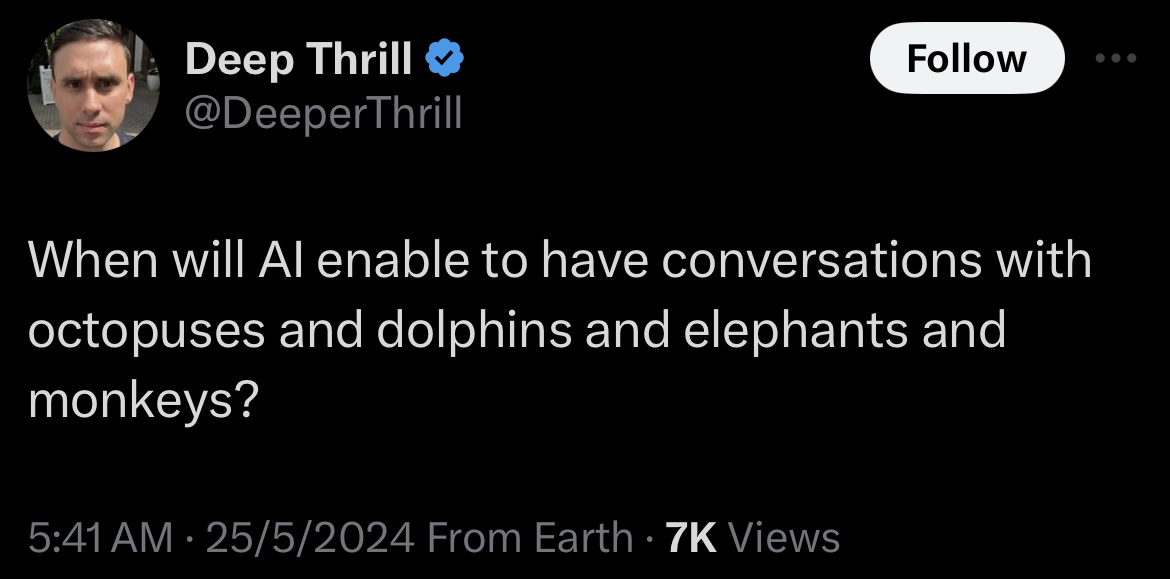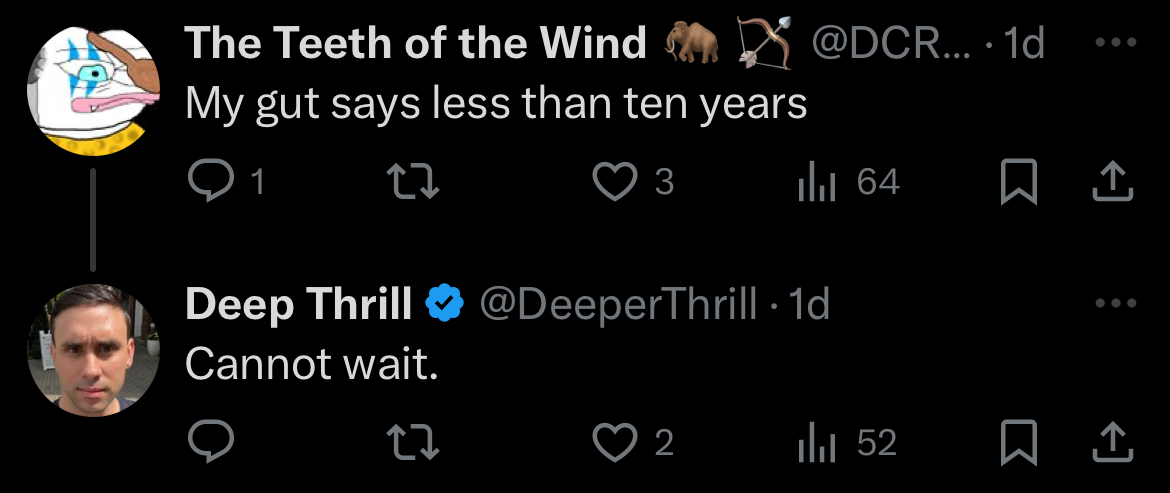
Based on this tweet:


“Talk to animals” here is that scientists are widely understood by the public to be in communication with a non human animal/s.
Or, people can use an app to e.g. talk to their dog.
This market is a similar question but one year later, and has an inconsistent likelihood: https://manifold.markets/Soli/will-humans-be-able-to-talk-with-an
We can already talk to apes using sign language https://en.wikipedia.org/wiki/Great_ape_language#Use_of_sign_language
Based on this video, it might seem like this is more a question on the capability of robots than AI. We may have cracked the code on some of the methods bees use to communicate. We'd just need a little robot bee to remote control.
Or is this not in the scope of the question?
@singer I’d say they’re talking about being able to decode what a dolphins is saying to another dolphin. With octopuses I’m less sure.
@keltan The wording seems to point to human-animal conversation, despite what's in the screenshot:
“Talk to animals” here is that scientists are widely understood by the public to be in communication with a non human animal/s.
Also the title as of now is "Will AI allow us to talk to animals by 2034?"
@keltan But regardless of the actual criteria for this question, can you give me a sample transcript of what a conversation between two dolphins might look like? Not necessarily the most impressive one, or the median one, just one that's likely to have happened before.
@singer Sure! Here’s what I predict a dolphin conversation might sound like.
Bob: Play? What to play? Play with me?
Alice: Hungry. Need food.
Bob: I know food. I know where fish are. Follow me?
Alice: I will follow
@singer You’re right. An oversight by me. I should have rechecked my wording before answering.
To be in conversation with an animal would be to give it information even if it is untrained to revive that information. For example, “there is food over there” and then we watch the animal go and eat the food it previously didn’t know about.
@keltan The bolded (edit: and with brackets) words are the words I'm curious about. Just like with human languages, it's unlikely that these map 1-for-1, so what are the smallest units of meaning that contain each one?
Bob: Play? [What to] play? Play with me?
Alice: Hungry. Need food.
Bob: I know food. I know [where] fish are. Follow me?
Alice: I [will] follow
To be in conversation with an animal would be to give it information even if it is untrained to revive that information. For example, “there is food over there” and then we watch the animal go and eat the food it previously didn’t know about.
That seems like an excellent definition for communication. But I don't think that this is what a conversation is. For one, the interlocutor needs to respond back.
Is "there is food over there" a single discrete symbol? Or can you say "over there food is" and have the dog understand you? If the dog only understands isolated symbols that can't combine, it's not clear that your understanding of the meaning has the same significance for the dog. The dog might just think "my owner thinks it's exciting over there" and then realize "oh, there's food!". If that's what's happening, I also don't think it could be called a conversation, because you wouldn't actually be understanding each other.